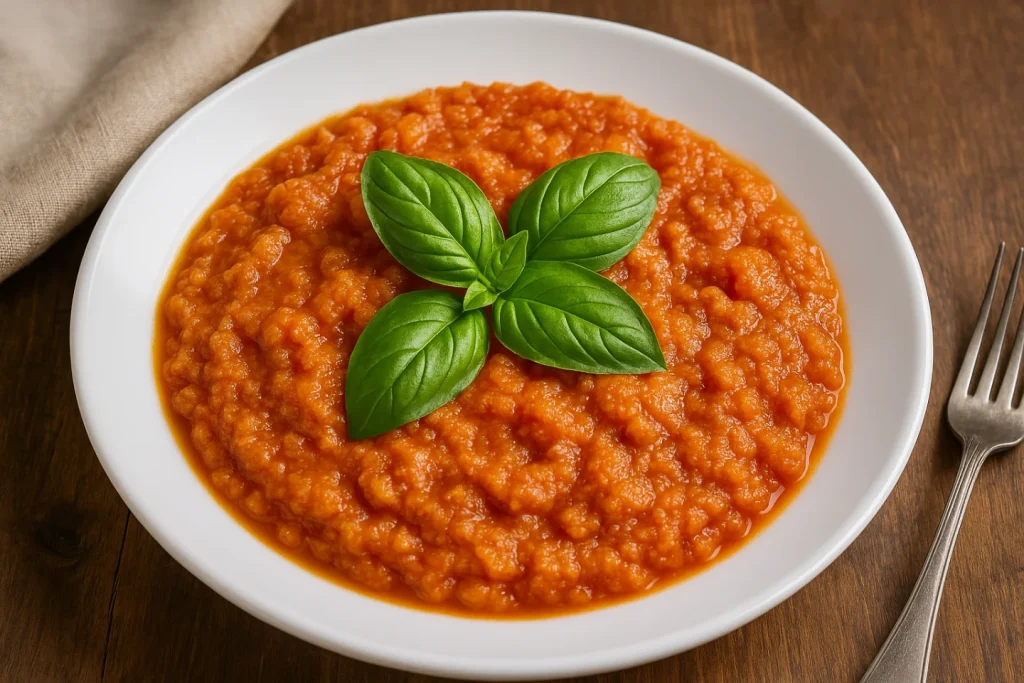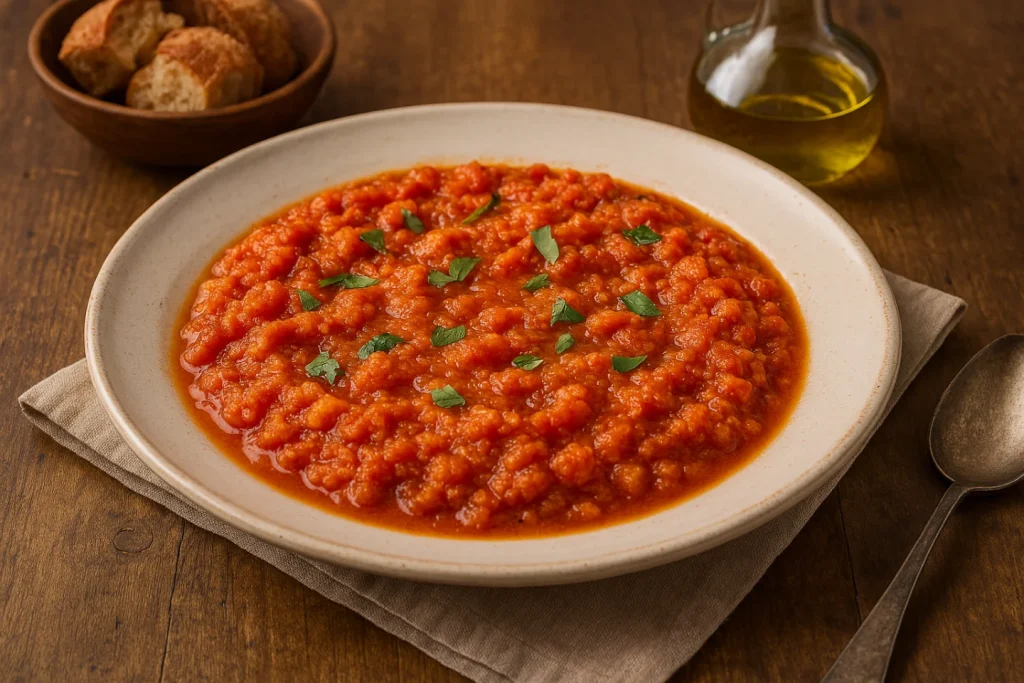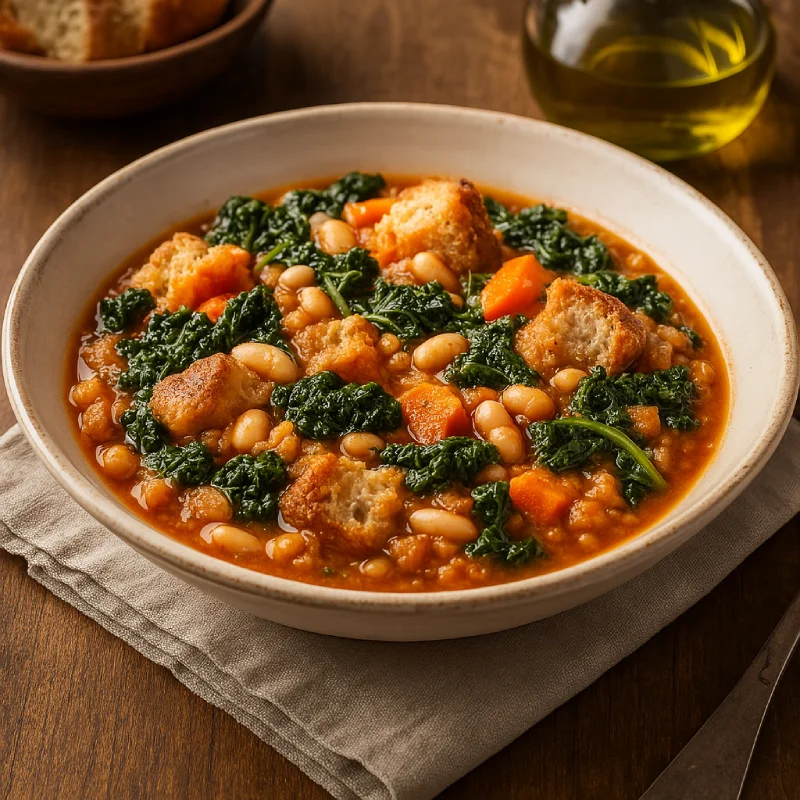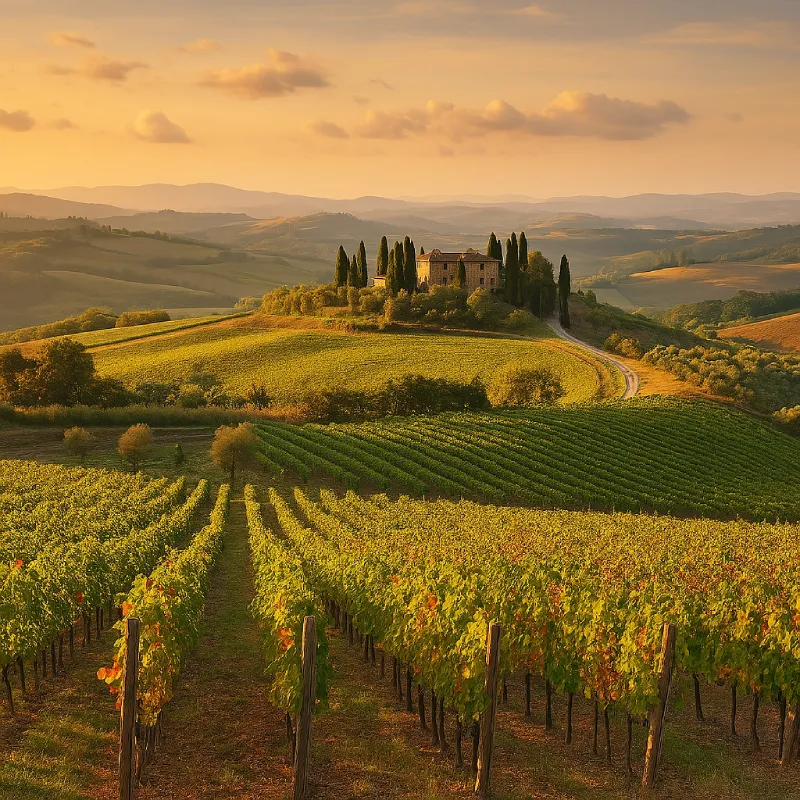Tuscan cuisine is famous worldwide for its simplicity, authenticity, and deep connection to the land. But beyond the famous bistecca alla fiorentina and pappardelle al cinghiale lies a world of hidden flavors—recipes passed down through generations and kept alive in tiny villages, local trattorias, and seasonal food festivals. In this article, we’ll explore the best traditional Tuscan dishes that rarely appear on tourist menus but reflect the region’s true soul.
Rustic Appetizers and Countryside Flavors
Crostini neri (liver or spleen paté)
A staple on Tuscan tables, often overlooked by tourists. Made with toasted stale Tuscan bread topped with a warm paté of chicken liver or spleen, onion, capers, and anchovies.
Where to find them: Local taverns in the Arezzo area or during village festivals.
Lardo di Colonnata IGP
Cured in marble basins with herbs and spices. It melts on the tongue when served on warm bread or focaccia.
Typical of: Colonnata, in the Apuan Alps.
Fettunta
Simple but delicious: toasted Tuscan bread rubbed with garlic and drizzled with new extra virgin olive oil. Traditionally served in autumn, right after the olive harvest.

Lesser-Known but Irresistible First Courses
Pici all’aglione
Thick, hand-rolled pasta similar to spaghetti, served with a sauce made from giant garlic (aglione), tomatoes, and olive oil. A rustic, aromatic dish.
Where to try it: Around Montepulciano, Chiusi, and Pienza.
Testaroli from Lunigiana
An ancient dish between bread and pasta, cooked on cast-iron plates, cut into diamonds, and dressed with pesto, oil, or local cheese.
Unique to: Lunigiana, on the Ligurian border.
Zuppa di pane (true winter ribollita)
Different from the tourist version! In its true form, vegetables dominate—especially cavolo nero—and it’s often “re-boiled” two or three times.
Pro tip: Try it in countryside inns in November or January.
Acquacotta from Maremma
A humble soup made with water, bread, onion, tomato, and a poached egg. Originated with the shepherds of southern Tuscany.
Main Courses that Tell Local Stories
Trippa alla fiorentina
Slow-cooked tripe with tomato, celery, and carrot. Served with grated Parmigiano and bread.
Best enjoyed in: Neighborhood markets like San Frediano or Sant’Ambrogio in Florence.
Lampredotto
The king of Florentine street food. Try it not only as a sandwich, but in its original form: stewed with green sauce and spicy salsa.
Buglione di agnello
A hearty lamb stew with red wine, herbs, and spices. Traditional in the Casentino area.
Often found: During local religious festivals or in village trattorias.
Wild boar stew with olives
An ancient recipe with a long marinade, slow cooking in red wine, herbs, and black olives. Rich and wild flavors.
Where to try it: Maremma or the Mugello hills.
Side Dishes and Hearty “Poor” Cuisine
Fagioli all’uccelletto
White cannellini beans slowly cooked with tomato and sage. Sometimes served with sausage.
Fried or stewed cardoons
Typical of Arezzo and Siena: either stewed in tomato or fried after boiling.
Stewed cavolo nero
Simple and nutritious: sautéed with garlic, olive oil, chili pepper, and white wine.

Traditional Homemade Desserts
Castagnaccio
A rustic cake made with chestnut flour, raisins, pine nuts, rosemary, and olive oil. No sugar added—earthy and bold in flavor.
Schiacciata con l’uva
Typical of the Florentine autumn: made with bread dough and wine grapes. Juicy, fragrant, and slightly sweet.
Real Cantucci (with Vin Santo)
Handmade cantucci are very different from store-bought ones: less hard, irregular in shape, made with whole almonds.
Best with: A small-producer Vin Santo.
Where to Find Truly Traditional Tuscan Food
- Family-run trattorias: Outside the historic centers or in lesser-known towns.
- ARCI clubs and community houses: Offering genuine local food at affordable prices.
- Seasonal food festivals and village fairs: Each town has its specialty, often cooked by grandmothers.
- Local markets: Florence’s San Lorenzo and Sant’Ambrogio, or those in Arezzo, Siena, Livorno.
Experience Authentic Tuscany with Tuscany Private Tours
To truly discover Tuscany’s hidden flavors, having a local guide makes all the difference. With Tuscany Private Tours, the private driver and local guide service led by Maurizio Bellini, you can:
- Visit authentic trattorias far from tourist crowds
- Discover dishes prepared by generations-old family recipes
- Join food festivals, markets, and private tastings
- Savor real Tuscany with tailor-made food itineraries
Book your gastronomic adventure at tuscanyprivatetours.net and enjoy a journey through authentic flavors and stories.




